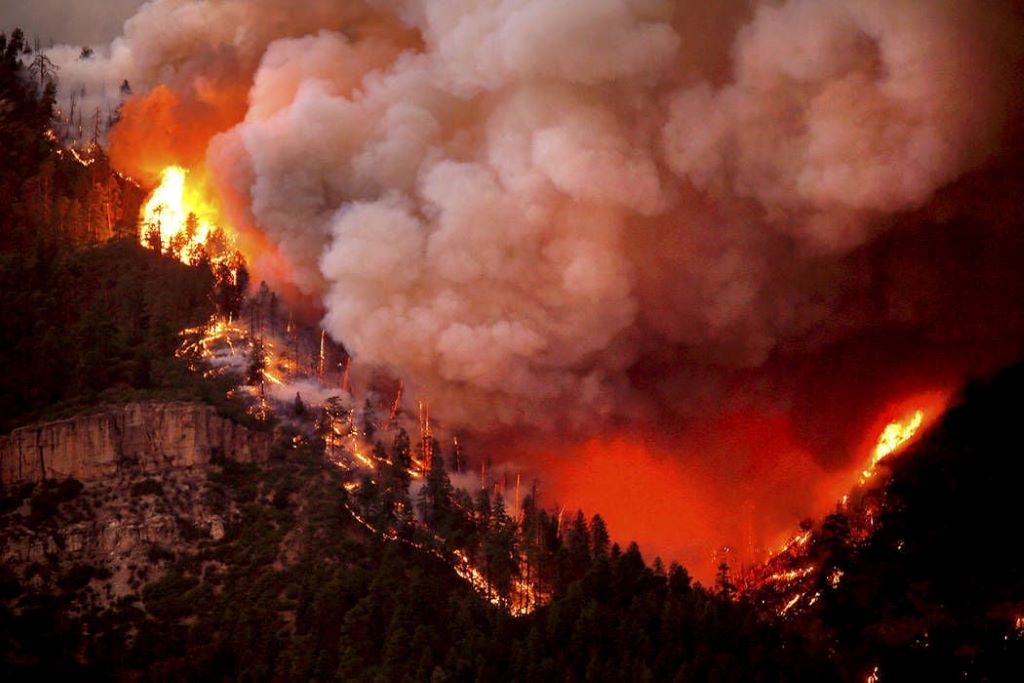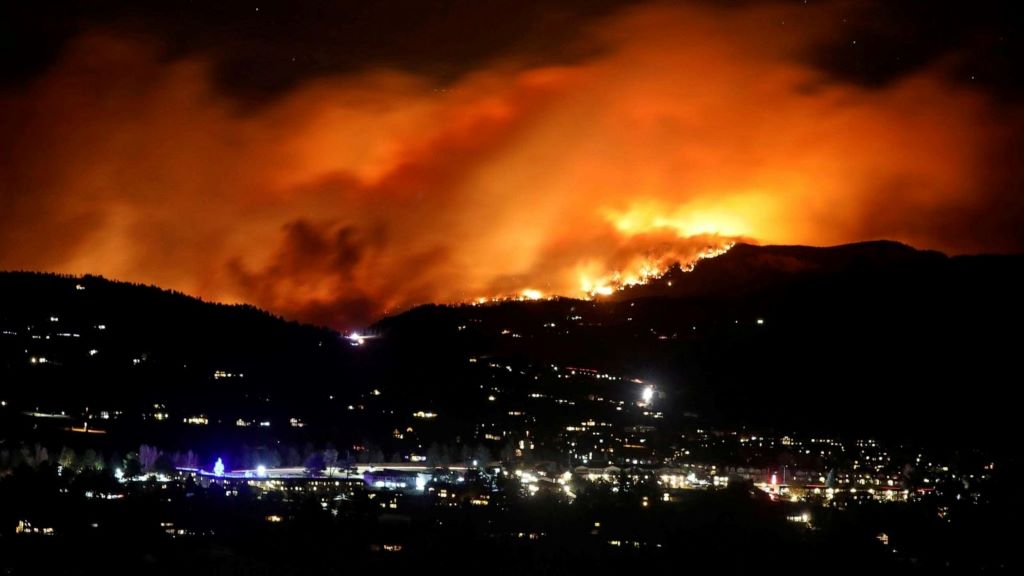
Colorado’s wildfire landscape has dramatically changed over the past two decades. The state faces increasing threats from massive blazes that devastate entire communities. Colorado Springs Home Living provides valuable insights into how these fires impact local communities and real estate markets across the region.
Thank you for reading this post, don't forget to subscribe!Understanding which towns face the greatest wildfire risks helps residents make informed decisions about safety and property investments. Additionally, learning from past fire events guides future preparation efforts. The largest colorado wildfire in history demonstrates the scale of destruction these natural disasters can cause across multiple communities.
Therefore, examining specific affected areas provides crucial knowledge for current and prospective Colorado residents. This comprehensive analysis explores the towns most impacted by major wildfire events and their ongoing recovery efforts.
Cameron Peak Fire Impact Areas
The Cameron Peak Fire became Colorado’s most destructive wildfire on record. The Cameron Peak Fire became the largest wildfire in Colorado history seven weeks later, and ended up burning a total of 208,913 acres. This massive blaze affected numerous Front Range communities during its months-long burn period.
Fort Collins and Surrounding Areas
Fort Collins faced significant threats as the primary urban center near the Cameron Peak Fire. The blaze burned just west of the city, creating dangerous conditions for residents. However, coordinated evacuation efforts and firefighting resources prevented major structural losses within city limits.
Suburban communities around Fort Collins experienced more direct impacts. Neighborhoods along the foothills required multiple evacuation orders. Additionally, smoke pollution affected air quality throughout the metro area for extended periods.
Red Feather Lakes Community
Red Feather Lakes suffered among the most severe impacts from the Cameron Peak Fire. At its peak, the fire forced the evacuation of over 6,000 residents in Estes Park, Chambers Lake, Rustic, Glacier View Meadows, Red Feather Lakes (and surrounding areas), Masonville, Glen Haven, Spring Canyon, various small communities along Highway 14, Stove Prairie Landing Road. This mountain community lost numerous structures and faced prolonged displacement.
The fire’s intensity in this area resulted from steep terrain and dense forest conditions. Therefore, firefighting efforts proved extremely challenging. Many residents lost homes and businesses, requiring extensive rebuilding efforts that continue today.
Estes Park and Gateway Communities
Estes Park, the gateway to Rocky Mountain National Park, faced unprecedented evacuation orders during the Cameron Peak Fire. The town’s tourism-dependent economy suffered significant disruption during peak fire activity. However, the community’s emergency preparedness helped minimize casualties.
Gateway communities along Highway 14 experienced varying degrees of impact. Some areas saw complete evacuation, while others maintained skeleton crews for essential services. Additionally, these small towns struggled with limited resources for fire suppression and recovery efforts.
Historical Context of Major Colorado Wildfires
20 of 20 largest wildfires have occurred in the last 20 years (since 2001), demonstrating the escalating wildfire threat across Colorado. This trend reflects changing climate conditions, forest management practices, and urban development patterns in fire-prone areas.
Previous major fires set the stage for understanding current wildfire impacts. The Hayman Fire, High Park Fire, and Waldo Canyon Fire each taught valuable lessons about community preparedness. Therefore, examining these events helps predict future risks and improve response strategies.

Climate Change and Fire Behavior
Modern Colorado wildfires burn hotter, faster, and cover larger areas than historical fires. Climate change has increased temperatures and decreased humidity in Colorado and sometimes reduces spring snowmelt, both of which contribute to fire conditions. These conditions create perfect storms for mega-fires affecting multiple communities simultaneously.
Extended drought periods compound fire risks across the state. Additionally, mountain pine beetle infestations have left vast areas of dead trees, creating abundant fuel loads. Therefore, even small ignitions can rapidly develop into community-threatening blazes.
Mountain Communities at Risk
Colorado’s mountain towns face unique wildfire challenges due to their geographic locations and limited access routes. These communities often have single evacuation corridors and limited firefighting resources. However, their tight-knit nature often results in strong mutual aid networks.
Wildland-Urban Interface Zones
The wildland-urban interface represents the highest-risk areas for property loss and life safety. These zones blend natural vegetation with residential development, creating fire spread opportunities. Additionally, homes in these areas often use natural materials that increase ignition risks.
Building codes in interface zones have evolved to address fire risks. Modern construction requirements include fire-resistant materials and defensible space standards. Therefore, newer developments typically show better survival rates during major fire events.
Infrastructure Vulnerabilities
Mountain communities rely on vulnerable infrastructure systems that wildfires can easily disrupt. Power lines, water systems, and communication networks often run through fire-prone areas. Additionally, narrow mountain roads complicate evacuation and firefighting access.
Emergency services in these areas operate with limited budgets and equipment. Volunteer fire departments handle most initial response duties. Therefore, mutual aid agreements with neighboring departments become crucial during major incidents.
Recovery and Rebuilding Efforts
Post-fire recovery varies significantly between affected communities. Well-established towns with strong economic bases typically recover faster than smaller, resource-limited areas. However, insurance challenges and regulatory requirements complicate rebuilding efforts across all communities.
Economic Impacts on Local Markets
Wildfire-affected areas often see significant real estate market disruptions. Property values may decline initially due to fire damage and perceived risks. Additionally, insurance availability and costs change dramatically in post-fire markets.
According to CNN’s coverage of the Cameron Peak Fire, the massive blaze highlighted how quickly fire conditions can change and threaten entire regions. Tourism-dependent communities face additional challenges as visitor numbers often drop following major fire events.
Long-term Community Planning
Successful fire recovery requires comprehensive long-term planning approaches. Communities must balance rebuilding needs with future fire risk reduction. Therefore, many towns implement stricter building codes and vegetation management requirements.
Community fire adaptation plans help guide recovery decisions. These documents outline strategies for reducing future fire risks while maintaining community character. Additionally, they often include provisions for improved evacuation routes and firefighting infrastructure.
Current Fire Season Considerations
In 2025, we’ve already seen 5 wildfires grow to over 1000 acres, and a handful of new fires have popped up since the 4th of July. The current fire season demonstrates ongoing risks to Colorado communities. Early season activity often predicts challenging conditions throughout summer and fall months.
Weather patterns continue influencing fire behavior and community risks. Drought conditions, wind events, and temperature extremes all contribute to fire potential. Therefore, residents in fire-prone areas must maintain constant vigilance and preparedness.
Preparedness Recommendations
Individual preparedness forms the foundation of community fire safety. Residents should maintain defensible space around structures and develop family evacuation plans. Additionally, emergency supply kits help families respond quickly to evacuation orders.
Community-wide preparedness includes participation in fire adaptation planning processes. Residents can support improved building codes, vegetation management programs, and infrastructure improvements. Therefore, collective action enhances overall community resilience.
Conclusion
Colorado’s mega wildfires have fundamentally changed how communities approach fire risk and preparedness. The Cameron Peak Fire and other major blazes demonstrate the scale of potential impacts on Front Range and mountain communities. Towns like Red Feather Lakes, Estes Park, and Fort Collins area neighborhoods have learned valuable lessons about evacuation, suppression, and recovery processes.
Climate change continues driving larger and more destructive wildfire patterns across the state. Additionally, increasing development in wildland-urban interface zones expands the number of communities at risk. Therefore, comprehensive fire adaptation strategies become essential for protecting Colorado’s diverse communities.
Successful fire recovery requires collaboration between government agencies, community organizations, and individual residents. Long-term planning efforts must balance rebuilding needs with future risk reduction goals. However, Colorado communities have demonstrated remarkable resilience and determination in recovering from major wildfire events.
Frequently Asked Questions
Which Colorado towns are most at risk for future wildfires? Mountain communities in the wildland-urban interface face the highest risks, including areas around Fort Collins, Boulder, Colorado Springs, and numerous small mountain towns. Additionally, communities with limited evacuation routes and heavy forest fuels remain particularly vulnerable.
How long does wildfire recovery typically take for affected communities? Recovery timelines vary significantly based on fire severity and community resources. Basic infrastructure restoration may take months, while complete community recovery often requires several years. Therefore, well-prepared communities with strong economic foundations typically recover faster.
What should residents do to prepare for potential wildfire evacuations? Residents should create defensible space around properties, develop family evacuation plans, and maintain emergency supply kits. Additionally, staying informed about local fire conditions and heeding evacuation orders promptly remains crucial for safety.
How have building codes changed in fire-prone areas since major Colorado wildfires? Many communities have implemented stricter building codes requiring fire-resistant materials, improved access for emergency vehicles, and expanded defensible space requirements. However, enforcement and compliance vary between different jurisdictions across the state.
What resources are available for wildfire-affected homeowners during recovery? Federal disaster assistance, state recovery programs, and nonprofit organizations provide various forms of support including temporary housing, insurance assistance, and rebuilding grants. Additionally, many communities establish local recovery funds to help residents navigate the rebuilding process.
Read More:
